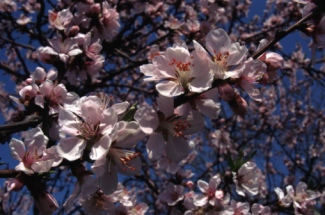Spring Exacerbates Many Psychiatric Symptoms (Part 1)
Ah, spring. The days get longer, the nights get shorter. Warm breezes threaten the remaining snow drifts from winter's storms. Almost as soon as the groundhog sees its shadow, swimsuits and light jackets appear in stores. Valentine's candy is replaced by Easter candy and all the bunnies, green grass, and baby chicks you can handle. Even if you live under a rock and miss all these signs, you'll know spring is on its way when you call your child's therapist and find her booked through mid-July. It seems spring not only brings out the birds, bunnies and chocolate eggs with gooey filling. It also brings out the crazy.
Children with Mental Illness Seem Prone to Seasonal Affective Disorder

It took a few years, but I eventually noticed a pattern with my son, Bob, who has bipolar disorder and ADHD. He seemed to level out during the late summer and early fall, all the way through the holidays. Around mid-January, however, the phone calls from school start again. By spring break, they're an almost daily occurrence. I usually spend the final two months of the school year running interference and just trying to keep Bob from being expelled. This goes on until about mid-July, when things calm down somewhat.
It isn't just Bob, either. It seems everyone I come into contact with (myself included) is just a little more off their collective rocker in early to mid-spring. My fuse has been substantially shorter with everyone, I have trouble focusing, and despite getting my usual amount of sleep, I'm exhausted. I know several couples who have separated in just the last few weeks. Bob's therapist has been booked solid, and she remarked during our last conversation, "there's just something about this time of year that makes everyone freak out."
It's no coincidence. Many different psychiatric illnesses are affected by seasonal climate changes, such as temperature fluctuation and changes in daylight hours. Compounding an already difficult problem, misdiagnosis often occurs as a result of seasonal symptom changes.

Many people are familiar with the "spring madness" associated with bipolar disorder. A Canadian study cited various factors that may be responsible for seasonal cycling, including genetic predisposition, climatic changes, and general intolerance to temperature fluctuations. Additionally, bipolar children (and adults) diagnosed with depression in the fall and prescribed antidepressants can find themselves experiencing mania, heightened by the antidepressants, come spring.
The seasons affect other psychiatric disorders, as well. Many people report increased anxiety during the spring and summer months. Seasonal Affective Disorder (SAD) may appear in the spring (rather than in the fall, the season most commonly associated with SAD). Another form of SAD, reverse seasonal affective disorder, is characterized by manic or hypomanic symptoms and considered a form of bipolar disorder.
Next in Part 2 - How to Cope with Spring Psychiatric Symptoms
APA Reference
McClanahan, A.
(2011, February 23). Spring Exacerbates Many Psychiatric Symptoms (Part 1), HealthyPlace. Retrieved
on 2025, November 21 from https://www.healthyplace.com/blogs/parentingchildwithmentalillness/2011/02/spring-exacerbates-many-psychiatric-symptoms-part-1